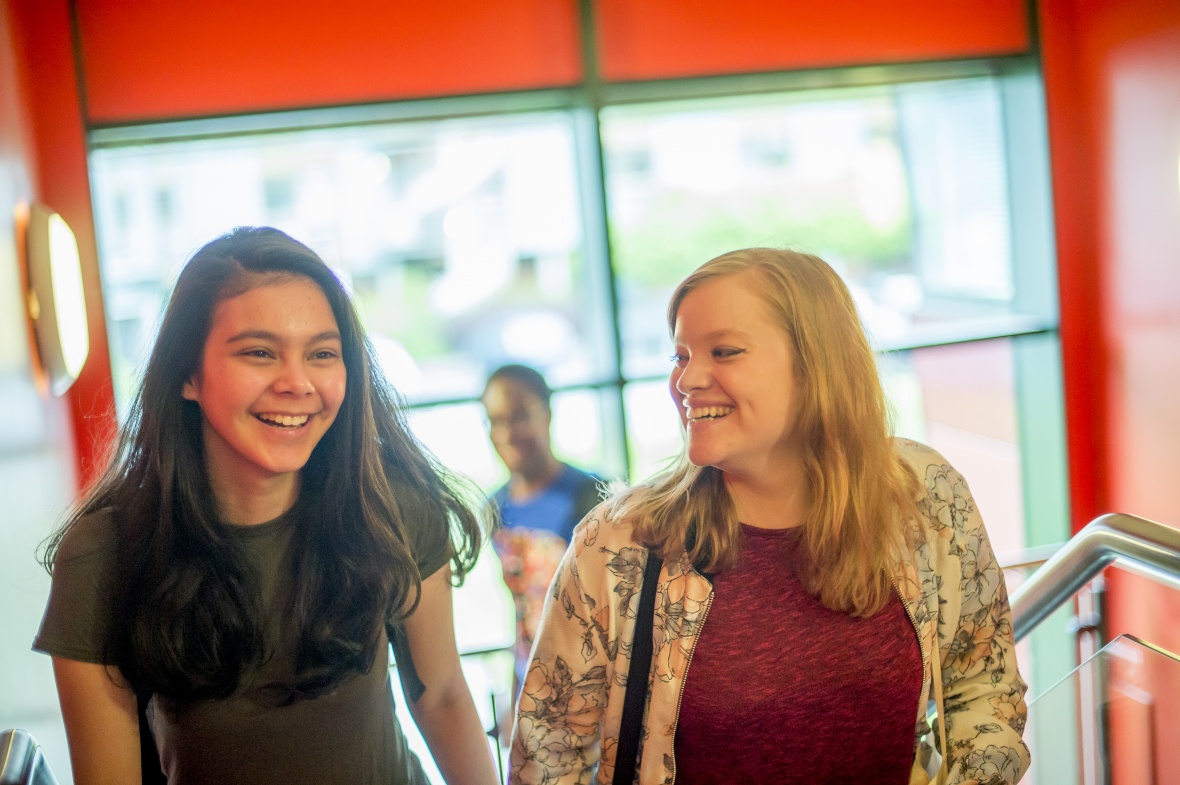Information, advice and guidance
Student support
Online teaching during the Covid-19 pandemic – what have teachers learnt?
A new school year is beginning and although Covid-19 is still with us we can at least now say that the worst is likely to be behind us. As a result, online learning is starting to take a back seat. But there’s a good chance that, for one reason or another, most teachers will deliver more online lessons in the future. Now is a good time to reflect on what does (and doesn’t) constitute high quality online teaching to ensure that the lessons that teachers have learnt from the pandemic are not forgotten.

It’s easy to assume that Generation Z (roughly speaking, those under the age of 24 at the time of writing) are ‘naturals at navigating the online world’. However, don’t assume that witty memes and TikTok expertise translate to knowing how to learn in the online classroom.1 Students do not like answering questions in the digital world any more than they do during face-to-face sessions, yet the inevitable Zoom silence still takes teachers by surprise after asking for responses. If anything, the lack of connection students have with their peers and the added pressure of their name being assigned to every contribution makes it more daunting for students to speak up. It’s important not to dismiss students because they aren’t engaging vocally and instead consider how students can engage in different ways.2 A “lift and replicate” process will not work when teaching online3 but pedagogical understanding will be a strong foundation to build a new way of learning that is stimulating, interactive and fun. To do this, you must develop a mindset that will allow you to see the potential of digital tools and how they could maximise your lesson outcomes.
Considering pedagogy
You do not need to entirely reinvent the wheel to create impactful teaching using digital tools; educational philosophies and pedagogies remain fundamental, but you should revaluate how this looks online. A student-centred approach and active learning have been catalytic components in educationalist theories and practice for decades; Dewey’s thoughts about learning-through-doing are entirely relevant today but how can this strategy be maintained online?4 More difficult: how can we re-establish constructivist ideas5 that individuals learn through imitation, observation and social interaction6 when students are miles apart? To summarise, how can you ensure a pupil-centred approach that inspires curiosity and encourages interaction remains at the heart of teaching online?
Active Learning
Interaction doesn’t equate to verbal communication but ‘direct involvement with something’; even online, students should be active rather than passive learners. Consider the different ways students could interact online and how you might assess their understanding; rather than verbalising ideas you could use polls, quizzes, emojis, the chat function7, word walls and live Google documents in break out rooms.8 Keeping interaction anonymous or allowing students to work in smaller groups, at least initially, should give students confidence in their contributions.2 It may also be useful to plan a regular time slot that you will be available to answer questions one-to-one via instant messenger. Although this isn’t active at the point of learning, students can take responsibility for their learning by asking questions and getting instant feedback after digesting information in a less intimidating environment.
Social Learning: relationship and belonging
Helping students to feel as though they belong presents challenges at a distance; it is more difficult for students to connect with you and their peers. In a bizarre twist you may need to plan time for students to build these relationships so that they can feel connected. Try using open ended questions or get students to discuss their own experiences with each other (building on what they know to bolster confidence7). You could create collaborative playlists to listen to before the session or organise baking challenges, fitness groups, photo challenges and even ‘gif wars’ to encourage humour9 and connection. You may also want to consider using social media to provoke discussion around topics or themes.7
Students also need to feel they can relate to you and that you are invested in their learning. Being personable online is challenging, not least because it is difficult to know where to draw the line. Teaching from home can already feel like an invasion into our personal lives. We naturally feel uncomfortable and, perhaps, overcompensate becoming too disconnected. It is right to be cautious, but teachers should consider how they will form working relationships with students. You might try creating an introductory video; this doesn’t need to take time or be too professional, students need to feel they can relate to you.7 Try to get to know students personally as much as possible and their skills.10 This is more difficult online but even using students’ names (making sure you are pronouncing them properly!) can be a great way to increase that sense of belonging.
Allowing time to build relationships with students and encouraging them to connect with each other will help students to feel more comfortable and engage and enjoy the session content more! Whilst online, just as in the classroom, teachers should foster an environment that encourages students to ‘be wrong loudly’. Model this by admitting getting things wrong and the benefits of this.11 Developing a growth mindset12 is just as important as ever, we will just have to promote this differently online.
Behaviour
You may be tempted to skip past this section as disruptions have been less frequent or/and more manageable online, but this is only positive if students are still engaging with the session. Students need to feel confident that they know what is expected of them. Remember they’ve been thrown into digital learning and feel just as disoriented as you. As Bill Rogers explains, setting routines and expectations is important for students to feel comfortable in their environment.13 Clearly lay out your expectations and reinforce these as you would in the classroom. This is also good practice for inclusivity and will benefit pupils with learning needs such as autism.
To summarise; some things to try...
> Consider different ways students can interact and you can assess understanding: polls, quizzes, emojis, the chat function, word walls and live Google documents in break out rooms
> Introduce anonymity (e.g. polling platforms, word walls etc.)
> Set aside time for instant messaging so that students can receive instant feedback
> Plan spontaneity for students to interact informally (e.g. discussions, competitions, games, etc.)
> Start sessions from students’ own experiences (to give them confidence)
> Create short introductory videos (and encourage students to share their own!)
> Use students’ names and make an effort to know them
> Create a culture of being ‘wrong loudly’ and model this
> Establish codes of conduct to build confidence
Notes:
1. The Campus (2021) Training students to learn successfully online, Available at https://www.timeshighereducation.com/campus/training-students-learn-successfully-online
2. The Campus (2021) Anonymous polling platforms to boost student confidence, engagement and inclusivity, Available at https://www.timeshighereducation.com/campus/anonymous-polling-platforms-boost-student-confidence-engagement-and-inclusivity
3. The Campus (2021) A blueprint for an engaging and student-centered online degree that works, Available at https://www.timeshighereducation.com/campus/blueprint-engaging-and-studentcentred-online-degree-works
4. Teach Thought (2015) The pedagogy of John Dewey: a summary, Available at https://www.teachthought.com/learning/pedagogy-john-dewey-summary/
5. Leader In Me (2020) Learning theories: understanding the 4 major ones for the classroom, Available at https://www.leaderinme.org/blog/learning-theories/
6. Educational Technology (2020) Lev Vygotsky - sociocultural theory of cognitive development, Available at https://educationaltechnology.net/lev-vygotsky-sociocultural-theory-of-cognitive-development/
7. The Campus (2020) Developing students' confidence and sense of belonging online, Available at https://www.timeshighereducation.com/campus/developing-students-confidence-and-sense-belonging-online
8. The Campus (2020) Think-pair-share: How to structure online classes, Available at https://www.timeshighereducation.com/campus/thinkpairshare-how-structure-online-classes
9. The Campus (2021) Promoting community and inclusiveness to diverse and dispersed students, Available at https://www.timeshighereducation.com/campus/promoting-community-and-inclusiveness-diverse-and-dispersed-students
10. Edutopia (2019) Every student atters: cultivating belonging in the classroom, Available at https://www.edutopia.org/article/every-student-matters-cultivating-belonging-classroom
11. The Campus (2020) Give students the confidence to 'be wrong, loudly' in online classes, Available at https://www.timeshighereducation.com/campus/give-students-confidence-be-wrong-loudly-online-classes
12. Brain Pickings (2014) Fixed vs. Growth: the two basic mindsets that shape our lives, Available at https://www.brainpickings.org/2014/01/29/carol-dweck-mindset/
13. Teacher (2017) Behaviour management episode 1: Dr Bill Rogers on starting the new year, Available at https://www.teachermagazine.com/sea_en/articles/behaviour-management-episode-1-dr-bill-rogers-on-starting-the-new-year
Unlock the full features
of Advancing Access
Create an account
To comment on our blog posts you need to either sign in or register an account. A free Advancing Access account will also enable you to:
>Download our full collection of CPD resources
>Take part in our online Virtual Conferences
>Keep up to date with the latest developments with our occasional emails (opt out available)








Comments